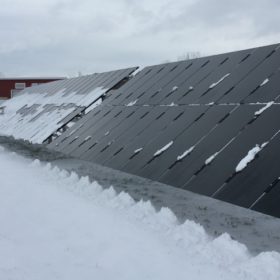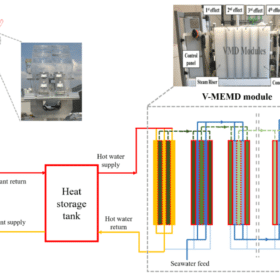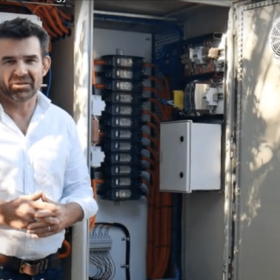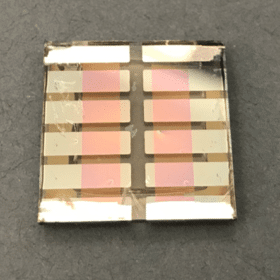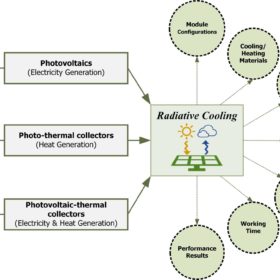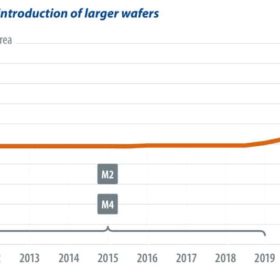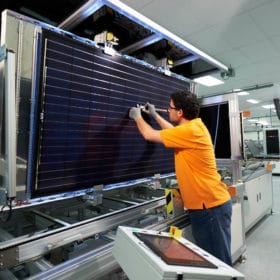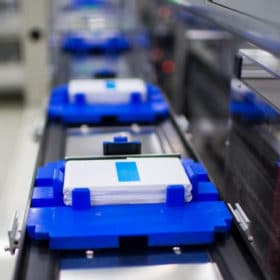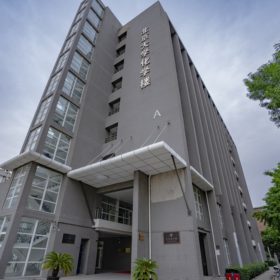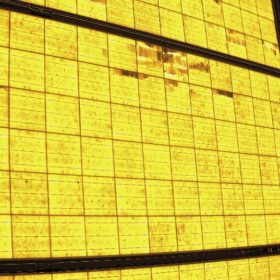Going fission! How scientific enquiry by UNSW may push solar cell efficiency to 38.2%
Cross-pollination of scientific and engineering thought within the ARC Centre of Excellence for Exciton Science has led to promising findings on the the cool solar-cell efficiency-boosting mechanism known as singlet fission.
Rooftop CPV-thermal tech to produce electricity and freshwater
It’s claimed the decentralised desalination system can deliver a levelised cost for desalinated water of US$0.7-4.3/m3, depending on PV costs and electricity prices. It was built with several concentrated photovoltaic/thermal (CPV-T) collectors, a hot water tank, a V-MEMD module, a seawater feed tank, and a distillate tank.
Redflow launches itself into high-voltage grid-scale space with Energy Pod Z modules
Queensland flow battery company, Redflow, has unveiled the product it’s hoping will launch its lucrative high-voltage, high-capacity, grid-scale future: the Energy Pod Z module.
Organic solar for high-speed data detection and indoor light harvesting
Researchers in the United Kingdom have built a 14%-efficient organic PV device that can be used in high-speed optical wireless communication systems. The cell consists of a 4×2.5mm photoactive layer fabricated with a bulk heterojunction of a polymer donor and fullerene and non-fullerene acceptors.
The best radiative cooling tech for PV arrays
Scientists in China have analysed the radiative cooling techniques used in combination with solar energy systems such as PV arrays, solar thermal collectors, and concentrated PV installations. They identified five major system typologies based on functionality and working time.
Sunday read: Too big to handle
There has been a flurry of activity within the PV cell manufacturer landscape over the past 12 to 18 months, and it’s largely been in one direction: bigger. But as large-format modules arrive on the market, questions are being raised as to how long the trend can continue and when bigger becomes, quite simply, too big.
Australian manufacturer unveils new 400W module as demand grows
Australia’s only solar module manufacturer Tindo Solar has unveiled a new generation 400 W module for the domestic and export markets as the Adelaide-based company rides a wave of success that has delivered a 40% increase in retail orders and 70% rise in wholesale orders in the past 12 months.
Thai plans for 8 GWh lithium battery gigafab
The 1 GWh first phase of a planned 8 GWh lithium battery factory in Thailand is likely to be up and running during 2023.
A different angle on perovskite defects
Scientists in China took a closer look at the role of defects in limiting the performance of perovskite solar cells, demonstrating a screening effect that could be tuned to make material defects “invisible” to charge carriers, greatly improving cell performance. Using this approach they demonstrate a 22% efficient inverted perovskite solar cell, and theorise several new pathways to even higher performance.
Saturday read: Microcracks and module design
New cell and module technologies are boosting power outputs, but they often have implications for quality. A focus purely on cell cracking illustrates just this point, with some approaches proving beneficial, and others potentially problematic – cue Tristan Erion-Lorico from PV Evolution Labs (PVEL).
